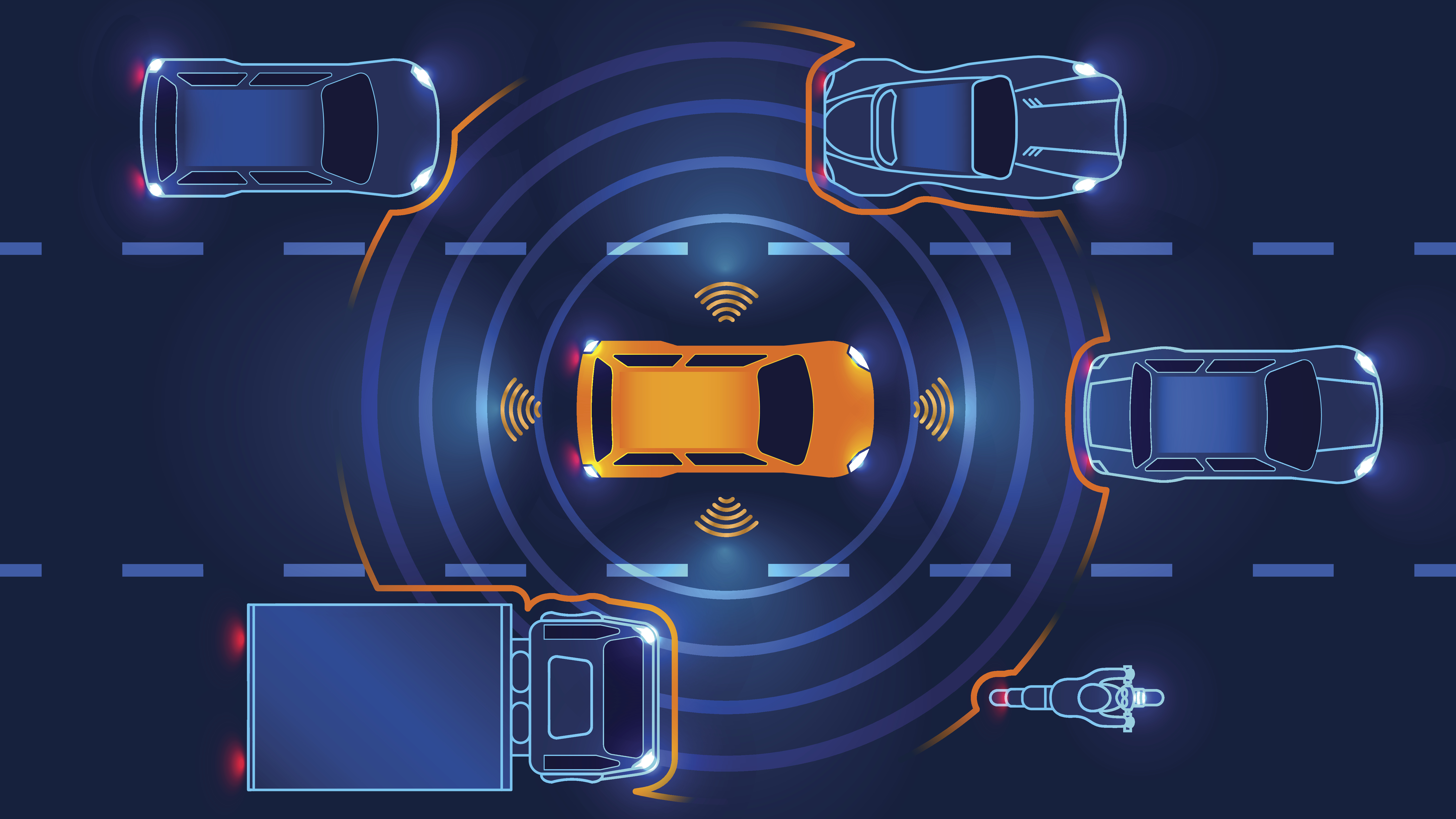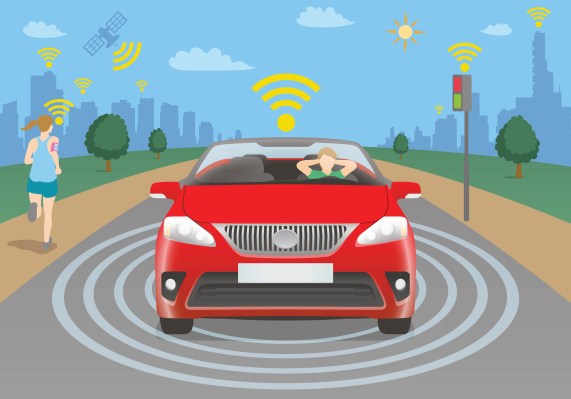Sidewalk Infrastructure Partners, which spun out of Alphabet’s Sidewalk Labs to fund and develop the next generation of infrastructure, has taken the covers off its first big project — the launch of a subsidiary called Cavnue to develop roadways for connected and autonomous vehicles.
Starting in Michigan, Cavnue will be working with partners including Ford, GM, Argo AI, Arrival, BMW, Honda, Toyota, TuSimple and Waymo on standards to develop the physical and digital infrastructure needed to move connected and autonomous cars out of pilot projects and onto America’s highways, freeways, interstates and city streets.
The starting point for Cavnue is a 40-mile corridor between downtown Detroit and Ann Arbor, Michigan that will be dedicated to autonomous vehicles. Ultimately, Cavnue envisions numerous corridors designed for autonomous shuttles and buses, as well as trucks and personal vehicles.
Cavnue will be the master developer of the 40-mile roadway, Michigan Gov. Gretchen Whitmer said Thursday in a joint announcement with Sidewalk Infrastructure Partners.
“The action we’re taking today is good for our families, our businesses, and our economy as a whole. Here in Michigan, the state that put the world on wheels, we are taking the initial steps to build the infrastructure to help us test and deploy the cars of the future,” Whitmer said in a statement. “As we rebuild our roads to ensure every Michigander can drive to work and drop their kids at school safely, we will also continue working to build smart infrastructure to help prepare us for the roads of tomorrow.”

Image Credits: Getty Images / petovarga
The Detroit-to-Ann Arbor corridor will include communities along Michigan Avenue and Interstate 94 in Wayne County and Washtenaw County, like the University of Michigan, the Detroit Metropolitan Airport and Michigan Central Station. The corridor will also include up to 12 “Opportunity Zones” where communities and small businesses will be able to connect to the industrial, technological and academic hubs of the region, according to the company’s statement.
For the first phase of the project, Cavnue will work with a slew of Michigan state agencies, including the Office of Future Mobility and Electrification and the Michigan Department of Transportation, on a feasibility and design study that is expected to last about two years.
Initial work during the project’s first phase will look at the commercial and technological viability of the roadway’s design. Connected buses and shared mobility vehicles like vans and shuttles will be the first users of the roadway before it is eventually expanded to other types of connected autonomous vehicles, including freight and personal vehicles, according to a statement from Cavnue.
Key partners
In 2018, Bill Ford envisioned a connected corridor similar to the one that Cavnue is proposing to build — envisioning the company’s Corktown innovation hub as an east end node in a circuit that would run along the Ann Arbor to Detroit corridor. Now Ford is a key partner in Cavnue’s project.
However, there are numerous others that Cavnue is also leaning on, including the University of Michigan with its CAV research center and Mcity Test Facility, Transportation Research Institute (UMTRI) and facilities along the proposed corridor, as well as the testing facility American Center for Mobility.
“My vision for Michigan Central is to create an open mobility innovation district that solves tomorrow’s transportation challenges and improves mobility access for everyone,” said Ford, the executive chairman of his eponymous car company, in a statement. “Building out a connected corridor cements Michigan as a leader in creating a more connected, autonomous and electrified future. We thank the state for recognizing the community and economic benefits and the importance of creating smart infrastructure across southeast Michigan.”

Image Credits: Andrey Suslov / Getty Images
Human error behind the wheel of cars is a leading cause of death around the country; in Michigan, 10,000 people have died in fatal automobile crashes over the last decade. Companies like Cavnue’s partners including Ford, GM, Argo AI, Arrival, BMW, Honda, Toyota, TuSimple and Waymo argue that connected and autonomous vehicles can reduce those fatalities while also cutting the hours commuters spend in traffic.
The sweeping nature of Cavnue’s mission is also an admission of sorts that the commercial deployment of autonomous vehicles is further away than this nascent industry initially thought. Born of an innovation event at Google’s headquarters, the seed for Cavnue comes from the realization that level five autonomy (the fully autonomous vehicles that require no human intervention) are still a concept for futurists, rather than a near-term opportunity.
To justify the billions of dollars of investment required to continue research and development around autonomy, companies need near-term applications. And those applications will require physical infrastructure to work.
The Michigan startup scene is growing, and venture capitalists see several key areas of opportunities. Read more on Extra Crunch here.
For municipalities worried about congestion and the abandonment of light rail systems and other mass transit solutions in the age of COVID-19, these dedicated lanes may provide new sources of revenue for autonomous public transit and a way for companies to test their autonomous systems safely in the context of a much larger pilot project.
One thing that some of the planners envisioned was the use of autonomous shuttles as a replacement for light rail and the potential for a far more dynamic solution. Vehicles could be scaled up and down according to demand, and shared routes could speed efficiency and reduce the time it takes to get to a destination, these planners said.
Financing could come from the manufacturers of autonomous systems who would get new testing grounds for their technology and eventually individuals who owned cars with advanced driving systems could pay for access to the lanes using the dead space between public transit vehicles.
Ostensibly, someone could pay $10 to access the road and then put their vehicle into autonomous mode. Public transit and private delivery fleets would be prioritized, and a vehicle would have to demonstrate it has autonomous capabilities to even access the roadways.

Image Credits: Getty Images
The new service would depend on a new type of public-private partnership based on outcomes that could be measured by the number of public fare rates the new lanes generate. Companies like Cavnue would source the vehicles and build the infrastructure. It would provide the capital expenditures for the roadway and retain the rights to sell access to the autonomous-enabled cars when use permits.
If it works in Michigan, some of the state’s congressional leadership intends to push for the expansion of the plan across the country.
“Michigan is at the forefront of this new frontier in mobility. Our state is home to a dense nexus of automakers, suppliers, engineers, universities and testing facilities that are pioneering advances in transportation that will transform how we get around,” said Michigan Senator Gary Peters. “This announcement is a major step forward towards ensuring Michigan continues to be the center of self-driving car research and development. I’m going to continue working at the federal level to develop a federal framework for the safe deployment of these revolutionary — and live-saving — technologies.”
Not everyone is convinced that the investment makes sense, though.
“That’s an enormous investment in grey infrastructure. That’s a major infrastructure project,” said one infrastructure expert who declined to be identified because she was not authorized to speak about the project. “That’s something that you’re locking into. You’re locking into that design and locking in to that use case… The dedicated lanes are not something that’s being put forward by transportation advocates. I’ve only heard it from people who work with autonomous vehicles and have a vested interest in seeing their adoption.”
